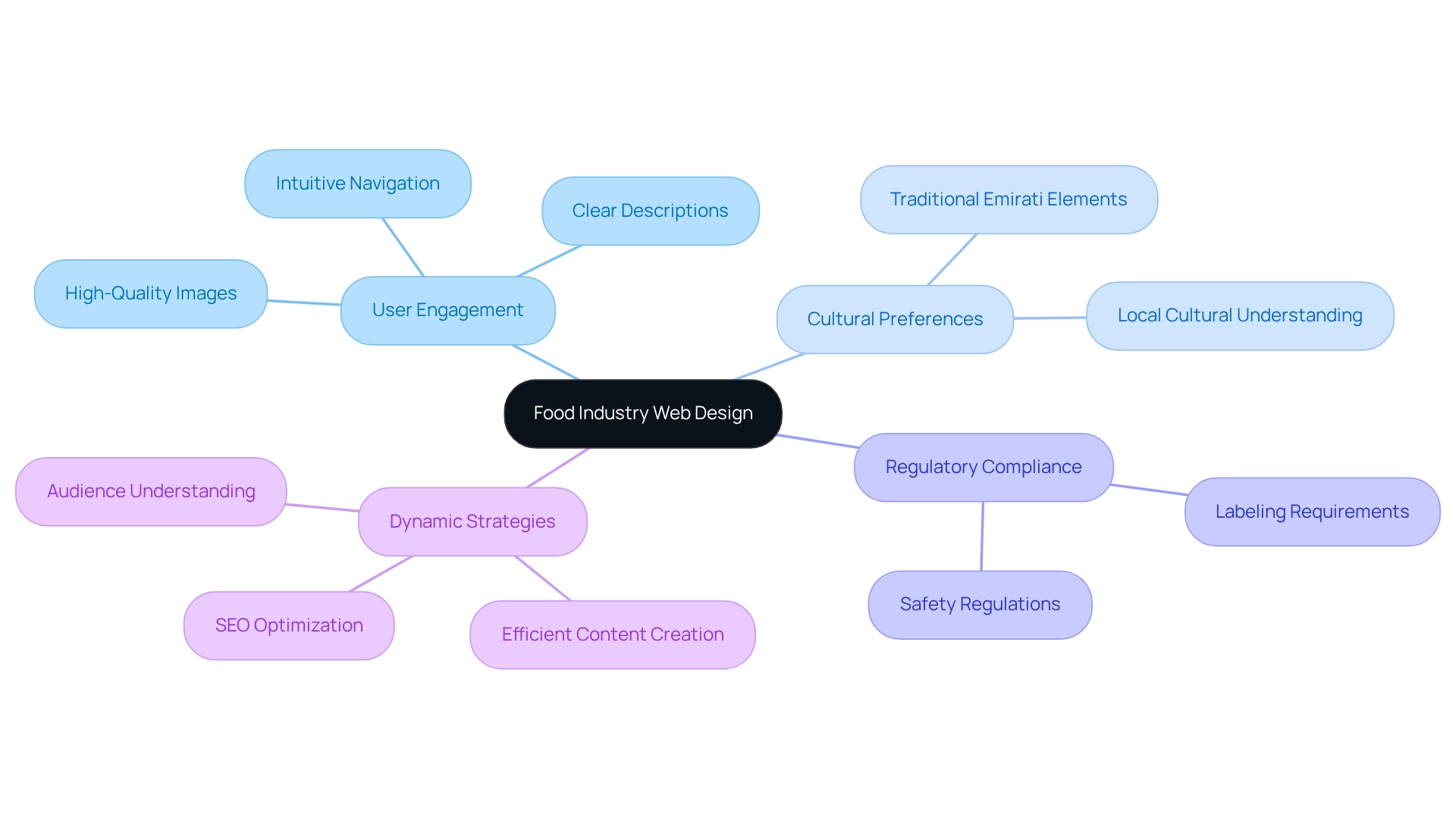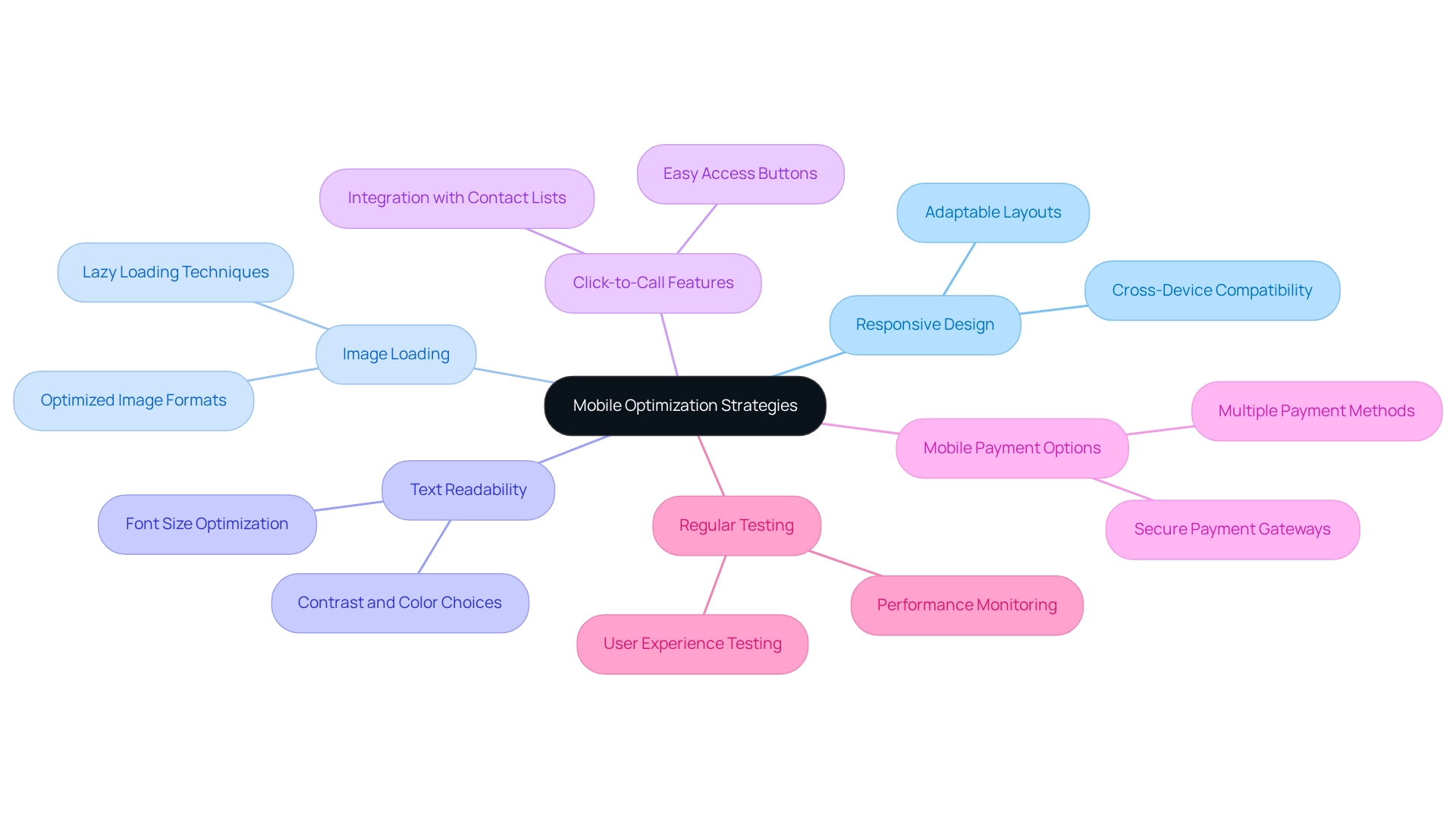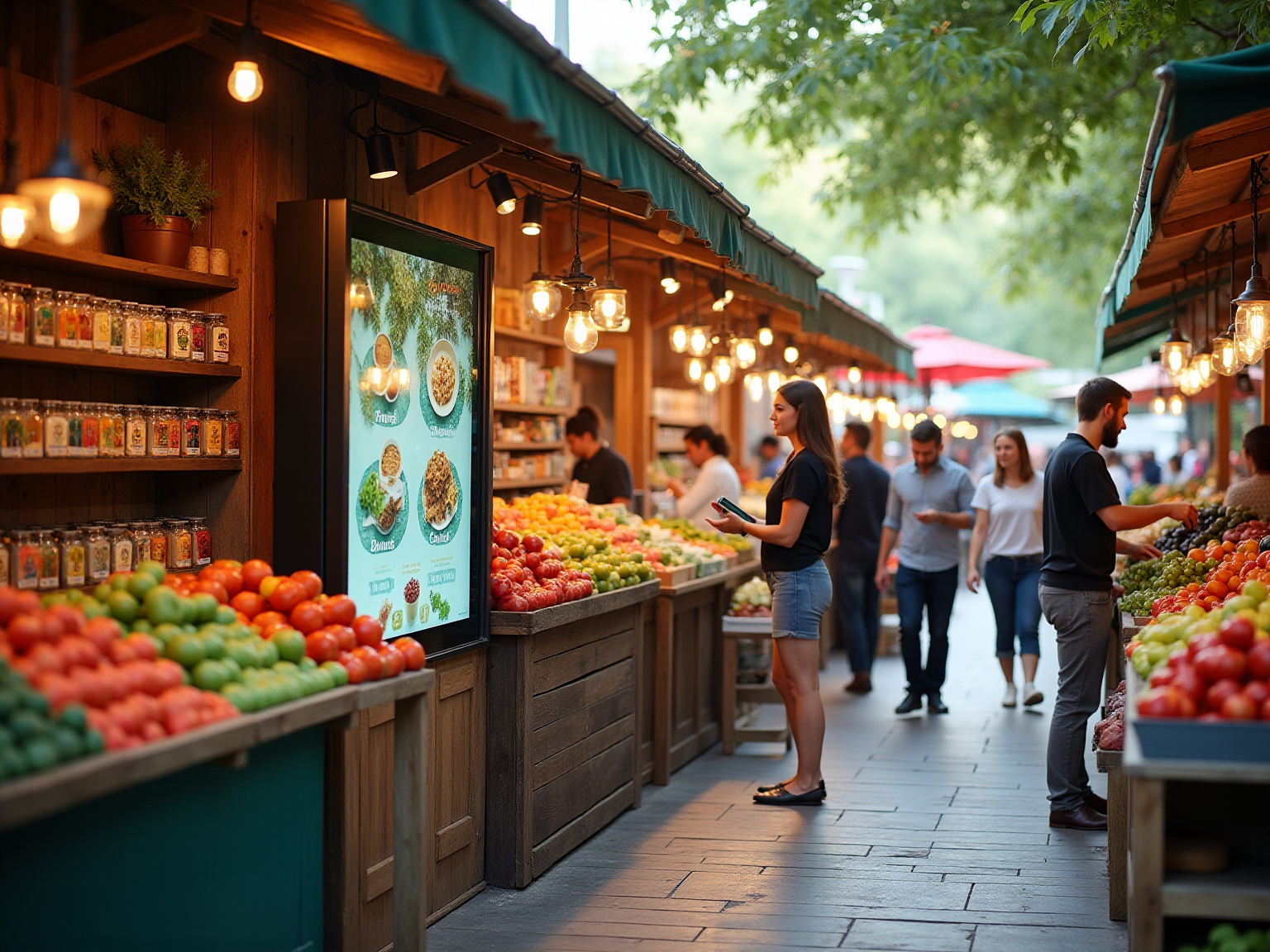Digital Branding Strategies
5 Best Practices for Web Design in the Food Industry in the Emirates
Overview
Best practices for web design in the food industry within the Emirates center on enhancing user experience, optimizing for mobile, and ensuring brand consistency through engaging visual content. These strategies are crucial for addressing consumer preferences and increasing engagement. They foster a visually appealing and intuitive online presence that aligns with local cultural values, ultimately elevating overall customer satisfaction.
Introduction
In today’s digital landscape, where first impressions are frequently formed online, food industry websites must rise to the occasion by addressing unique consumer needs and preferences. The design of these websites is pivotal in capturing attention and fostering engagement; they must showcase tantalizing visuals, intuitive navigation, and essential information compellingly.
Given that a significant portion of consumers judges a company’s credibility based on its online presence, understanding the nuances of web design specific to the food sector is crucial. By prioritizing user experience and mobile optimization, and leveraging captivating visual content, businesses in this competitive market can create a memorable and effective online identity that resonates with their audience.
This article delves into best practices and innovative strategies, exploring how food industry websites can enhance their appeal and drive customer loyalty in an ever-evolving digital age.
Understand the Unique Needs of Food Industry Web Design
The unique characteristics of the food industry significantly influence the best practices for web design in the food industry in the emirates. To boost user engagement, websites must effectively cater to consumer appetites and preferences by showcasing products through visually appealing high-quality images, clear descriptions, and intuitive navigation, adhering to the best practices for web design in the food industry in the emirates.
Recent statistics reveal that 75% of consumers judge a company’s credibility based on its website design, underscoring the importance of a well-crafted online presence. Understanding local cultural preferences is essential; for instance, applying best practices for web design in the food industry in the emirates, such as integrating traditional Emirati elements, can foster familiarity and trust among local consumers.
As designer Charles Eames aptly noted, ‘The details are not the details. They make the design,’ emphasizing the critical importance of attention to detail in web design. Furthermore, compliance with local regulations concerning safety and labeling is vital, ensuring that all required information is readily accessible. This approach not only enhances user experience but also adheres to the best practices for web design in the food industry in the emirates, ultimately driving engagement and loyalty.
Additionally, dynamic web development strategies, including SEO and efficient content creation, are crucial for improving Google rankings and ensuring that culinary sector platforms effectively reach their intended audience. Insights from the case study titled ‘The Importance of Audience Understanding’ highlight that content resonating with the audience’s identity and preferences is more effective in capturing attention and fostering engagement.
By integrating these components, culinary sector platforms can establish an engaging online identity that incorporates best practices for web design in the food industry in the emirates, addressing the distinct requirements of consumers.

Prioritize User Experience and Interface Design
A well-designed interface that adheres to the best practices for web design in the food industry in the emirates is indispensable for culinary industry platforms, as it profoundly impacts visitor engagement and satisfaction. Key elements encompass intuitive navigation, rapid loading times, and mobile responsiveness. Users should be able to access menus, nutritional information, and contact details effortlessly, thereby minimizing frustration. A clean design featuring clear calls to action, such as a prominent ‘Order Now’ button, can effectively guide visitors toward making purchases or inquiries.
Statistics reveal that 72% of online platforms fail to meet visitor expectations, with an average experience score of merely 59 out of 100. This is particularly concerning for the food sector, where consumer experience significantly influences customer choices. Conducting usability testing with real participants yields invaluable insights into site performance, facilitating continuous improvements based on user feedback.
Integrating best practices for intuitive navigation is imperative. For instance, successful restaurant platforms often display organized menus and distinct categorization, enabling visitors to swiftly locate what they need. Expert opinions indicate that 75% of site visitors evaluate an online platform’s credibility based on its overall aesthetics, underscoring the importance of an appealing design. Pop Web Design emphasizes this, noting that aesthetics play a pivotal role in shaping perceptions. Furthermore, the global UI and UX Design Software market, valued at $960.19 million in 2021, underscores the growing importance and investment in UI/UX design. This trend indicates that culinary industry online platforms must prioritize the best practices for web design in the food industry in the emirates to remain competitive. A practical illustration of effective UI and UX strategies is evident in WonderEight’s comprehensive campaign for Quaker Oats, which successfully integrated diverse branding and digital marketing techniques to bolster market presence and consumer engagement. By concentrating on these best practices for web design in the food industry in the emirates, culinary industry online platforms can markedly enhance their effectiveness, ultimately resulting in improved client engagement and satisfaction.

Implement Mobile Optimization Strategies
Mobile optimization is one of the best practices for web design in the food industry in the Emirates, especially given the exceptional heights of mobile usage. As Dr. Saeeda Jaffar, SVP and Group Country Manager for the GCC region, insightfully notes, “With the increasing interest in online and mobile shopping in the country, responsible digital retailers are seeking to enhance their systems to deliver a seamless and secure shopping experience both online and in-store for patrons.”
Implementing a responsive design is not merely beneficial but essential, as it reflects the best practices for web design in the food industry in the Emirates, allowing websites to adapt seamlessly across various screen sizes. This encompasses:
- Optimizing image loading times
- Ensuring text readability without necessitating zooming
- Features such as click-to-call buttons significantly enhance convenience, enabling individuals to connect with restaurants or dining services effortlessly
- The integration of mobile-friendly payment options is vital for streamlining the purchasing process and exemplifies the best practices for web design in the food industry in the Emirates, aligning with the growing trend of online food orders
Regular testing of the mobile version of the website is crucial to identify and rectify any issues that may impede user experience, ensuring a smooth and efficient interaction for users. Notably, 64% of SEO marketers regard mobile optimization as a sound investment, underscoring its acknowledged value within the industry.
However, common pitfalls such as neglecting mobile site speed and failing to optimize for diverse devices can severely undermine effectiveness. By employing these mobile optimization strategies, businesses can anticipate enhanced customer engagement and a notable increase in sales, aligning with the best practices for web design in the food industry in the Emirates.

Leverage Visual Content and Maintain Brand Consistency
Visual content is an indispensable asset in the culinary sector, capable of evoking emotions and stimulating appetites. High-quality images of meals, dynamic videos demonstrating dish preparation, and engaging graphics significantly enhance a site’s overall appeal. To effectively reinforce brand identity and build consumer trust, maintaining consistency across all visual elements—such as color schemes, typography, and imagery—is crucial. For instance, a culinary brand that employs vibrant colors and playful fonts in its packaging should reflect this aesthetic on its online presence to create a cohesive brand experience.
To maintain brand consistency in food websites, consider the following actionable steps:
- Ensure that color schemes and typography are uniform across all platforms.
- Use similar imagery styles that reflect the brand’s personality.
- Regularly update content to align with current branding strategies.
Moreover, incorporating user-generated content, like client photos and reviews, enhances authenticity while promoting stronger engagement with the audience. As Walter Landor explains, compelling brands aim to create a positive image in consumers’ minds, emphasizing the importance of effective branding in optimizing product value and nurturing relationships. Statistics suggest that consistent branding can optimize product value and strengthen client relationships, underscoring the importance of a unified visual strategy.
As branding expert Ann Handley states, “If you aren’t having fun, neither is your audience,” highlighting the need for enjoyable and engaging content. This perspective aligns with the case study on injecting fun into content marketing, illustrating how creative and relatable content resonates with consumers. Ultimately, maintaining brand consistency in web design, following the best practices for web design in the food industry in the emirates, is essential for creating a positive image in customers’ minds and driving business growth in the competitive food sector.

Conclusion
The significance of a robust online presence for food industry websites is paramount. By comprehensively understanding the distinct needs of consumers and emphasizing user-friendly design, businesses can construct engaging platforms that effectively highlight their offerings. High-quality visuals, intuitive navigation, and clear information are crucial in capturing attention and nurturing customer loyalty.
User experience and interface design are instrumental in retaining visitor engagement. A seamless experience characterized by swift loading times, mobile optimization, and easily accessible menus can profoundly impact consumer decisions. Regular usability testing and adherence to best practices ensure that websites not only meet but surpass user expectations, ultimately enhancing customer satisfaction and trust.
Furthermore, mobile optimization is essential in today’s digital landscape, especially in areas where mobile usage is widespread. By adopting responsive designs and mobile-friendly features, businesses can offer a convenient shopping experience that aligns with consumer habits. The integration of visual content further strengthens brand identity, enabling companies to evoke emotions and cultivate trust through consistent and engaging imagery.
In summary, food industry websites must evolve in response to the shifting digital landscape by embracing strategic design principles that prioritize user experience and visual appeal. By concentrating on these fundamental elements, businesses can forge a memorable online presence that resonates with their audience, fosters customer loyalty, and distinguishes themselves in a competitive market.
Frequently Asked Questions
What are the key characteristics influencing web design in the food industry in the Emirates?
The food industry’s unique characteristics require websites to cater to consumer appetites and preferences by showcasing products through high-quality images, clear descriptions, and intuitive navigation.
Why is website design important for consumer credibility?
Recent statistics indicate that 75% of consumers judge a company’s credibility based on its website design, highlighting the necessity of a well-crafted online presence.
How can local cultural preferences impact web design in the Emirates?
Integrating traditional Emirati elements into web design can foster familiarity and trust among local consumers, making it essential to understand and apply local cultural preferences.
What does Charles Eames’ quote about design emphasize?
Charles Eames’ quote, ‘The details are not the details. They make the design,’ emphasizes the importance of attention to detail in web design.
Why is compliance with local regulations important in web design?
Compliance with local regulations regarding safety and labeling ensures that required information is accessible, enhancing user experience and adhering to best practices in the food industry.
What role do dynamic web development strategies play in web design?
Dynamic web development strategies, including SEO and efficient content creation, are crucial for improving Google rankings and ensuring culinary sector platforms reach their intended audience effectively.
How does audience understanding contribute to effective content?
Content that resonates with the audience’s identity and preferences is more effective in capturing attention and fostering engagement, as highlighted in the case study titled ‘The Importance of Audience Understanding.’
What is the overall goal of integrating best practices in web design for the food industry in the Emirates?
By integrating best practices, culinary sector platforms can establish an engaging online identity that meets the distinct requirements of consumers, ultimately driving engagement and loyalty.



